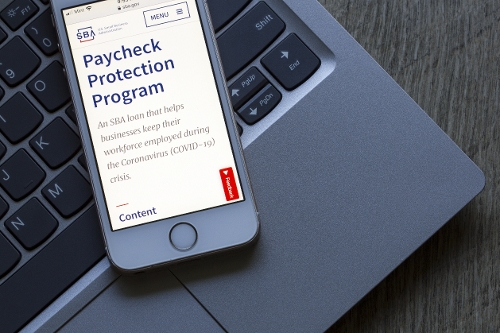
February 16, 2021
One of the most impactful parts of the Consolidated Appropriations Act of 2021 is the introduction of a second round of Paycheck Protection Program (PPP) loans. The second wave of these loans are arguably the biggest part of the Act for small businesses.
The first round of PPP loans was available as part of the Cares Act in Spring of 2020. Businesses got their original PPP money from the end of April to June. Many of those businesses have used all of the funds they were loaned and are still in a position where they are struggling with the restrictions brought on by the pandemic.
This second round of PPP loans is available to everyone who qualifies, not just those that did not take the first round that was offered. In addition, if you took the first round, there is no need for you to have to have filed for forgiveness.
Qualifications for Round 2 PPP
Aimed at small businesses that may have been hit harder during the shutdowns, with reduced hours and limited consumer traffic, round two is only available to those businesses that have less than 300 employees and show a 25% drop in revenue for a particular quarter.
Businesses must attest that they expect to, or have used, all of the prior PPP funds from round 1. They also must attest that these funds are being used for essential purposes of the organization.
To see if the business has met the necessary 25% declining revenue calculation, take a quarter in 2020 and review the Gross Revenue. Take that number and compare it to the Gross Revenue of the same quarter in 2019. If those numbers reflect that the business had more than a 25% decline from 2019 to 2020, it would qualify.
Calculate the loan amount
To calculate the PPP loan amount take 2.5 times the business’ average monthly payroll cost. As an alternate calculation, the business can perform the calculation for the year prior to the date of the loan, or can calculate it using 2019’s average monthly payroll costs.
While the Act was passed in 2020, the program was not put into place until the beginning of 2021. So, the way the Act reads, a business can take those average payroll costs prior to the date in which the loan is made. Other options are using the average payroll for 2020 or the average payroll for 2019. The business can decide if it’s going to use 2020 or 2019 based on the year that's going to generate the greater payroll average.
The Act provides some additional assistance for those hard-hit restaurants and other hospitality businesses that file with a NAICS code that starts with 72. (This code can be found on your tax return if you have any questions). Businesses that fall under these codes are permitted to use a 3.5 multiplier instead of the 2.5 discussed above.
The loans are capped at $2,000,000 for the second round.
Additional items
The second round of the PPP allows between 8 to 24 weeks to use the funds. The PPP funds can be used for the same purposes of round one like wages, rent, and leases, but the Act has added some extended purposes. You can now use the PPP funds for PPE (Personal Protection Equipment) that you use within your business, covered operations costs and supplier costs. This expands the list of expenses that are now covered under these loans.
Additionally, the application for this round of PPP loans has been simplified. If the business is applying for a loan of $150,000 there is a one-page certification that the applicant would now complete which will make applying much easier on the average small business who may not have a lot of extra time or staff to dedicate to applying for these loans.
501(c)(6) organizations are eligible for the PPP loans, which is new this round. This nonprofit code is common with civic organizations such as real estate boards, chambers of commerce, boards of trade, and business leagues.
Another difference in round two is farmers who file a Schedule F are able to qualify based on their Gross Revenue. This is huge because a lot of farmers can produce a negative net income, therefore preventing them from qualifying for the first round of the PPP. There is a cap of $100,000, however, so it is substantially limited, but farmers who don’t have any employees now qualifying for these loans is a win for agribusiness.
If you have any questions about how the newest round of PPP loans will affect your business, or on receiving forgiveness from the first round of PPP, don’t hesitate to contact your Faw Casson advisor.
